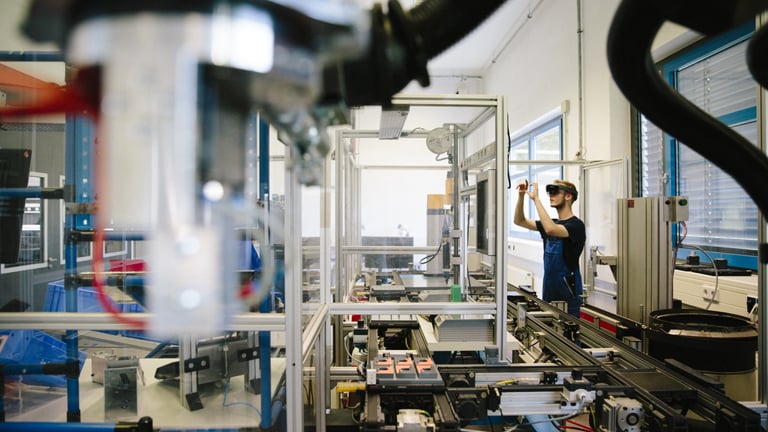 Manufacturing facilities are undergoing a major transformation due to digitization and big data. And while factory modernization is nothing new, what is new is the concept that Factory 4.0, the so-called smart factory, is never “done,” as was the case with factory modernization projects in the past. Rather, today’s smart factory represents an ongoing evolution; a continuous journey toward building and maintaining a flexible learning system.[1]
Manufacturing facilities are undergoing a major transformation due to digitization and big data. And while factory modernization is nothing new, what is new is the concept that Factory 4.0, the so-called smart factory, is never “done,” as was the case with factory modernization projects in the past. Rather, today’s smart factory represents an ongoing evolution; a continuous journey toward building and maintaining a flexible learning system.[1]
Linking machinery, personnel, maintenance activity and analytics for a completely integrated factory-management approach, a smart factory represents a new standard in how we create materials and products.
Factory 4.0 leverages technologies and industry 4.0 components such as non-intrusive sensors, wireless connectivity, cloud computing, artificial intelligence, machine learning and others to affect all phases of manufacturing business, from raw materials processing, safety and production to quality assurance, packaging and distribution.[2]
Indeed, the smart factory represents a leap forward from more traditional automation to a fully connected and flexible system — one that can use a constant stream of data from connected operations and production systems to learn and adapt to new demands.[3]
Historically, automation in a factory setting referred to the performance of a single task. The situations in which machines made decisions were linear and automation-based, such as opening a valve or turning a pump on and off based on a defined set of rules. But with Factory 4.0, automation increasingly includes making complex decisions that are typically made by humans.[4]
One of the goals of a smart factory is replacing corrective maintenance with predictive maintenance. But smart factories’ use of big data, plus their high level of connectivity and control, also allow manufacturers to improve other operations, products and services.
With Factory 4.0, manufacturers can:
- Detect risks.
- Predict failures.
- Prevent unplanned downtime.
- Detect increases in defects.
- Speed up repairs.
- Predict and prevent production waste.
- Manage inventory more precisely.
- Cut costs in numerous ways, leading to a leaner operation.
Perhaps most importantly, smart manufacturing can enhance manufacturers’ relationships with suppliers and customers by integrating shop-floor decisions and insights with the rest of the supply chain and broader enterprise through an interconnected IT and operational technology (OT) landscape — fundamentally changing production processes.[5]
Discover the advanced manufacturing technologies that are making smart factories possible at SME’s The Best of SMX one-day virtual event on October 29, 2020.
[1] “The Smart Factory: Responsive, Adaptive, Connected Manufacturing;” Rick Burke, Adam Mussomeli, Martin Hartigan and Brenna Sniderman; Deloitte Insights, Aug. 31, 2017 https://www2.deloitte.com/us/en/insights/focus/industry-4-0/smart-factory-connected-manufacturing.html.
[2] https://www.seebo.com/factory-4-0/
[3] “The Smart Factory: Responsive, Adaptive, Connected Manufacturing;” Rick Burke, Adam Mussomeli, Martin Hartigan and Brenna Sniderman; Deloitte Insights, Aug. 31, 2017 https://www2.deloitte.com/us/en/insights/focus/industry-4-0/smart-factory-connected-manufacturing.html.
[4] “The Smart Factory: Responsive, Adaptive, Connected Manufacturing;” Rick Burke, Adam Mussomeli, Martin Hartigan and Brenna Sniderman; Deloitte Insights, Aug. 31, 2017 https://www2.deloitte.com/us/en/insights/focus/industry-4-0/smart-factory-connected-manufacturing.html.
[5] “The Smart Factory: Responsive, Adaptive, Connected Manufacturing;” Rick Burke, Adam Mussomeli, Martin Hartigan and Brenna Sniderman; Deloitte Insights, Aug. 31, 2017 https://www2.deloitte.com/us/en/insights/focus/industry-4-0/smart-factory-connected-manufacturing.html.
